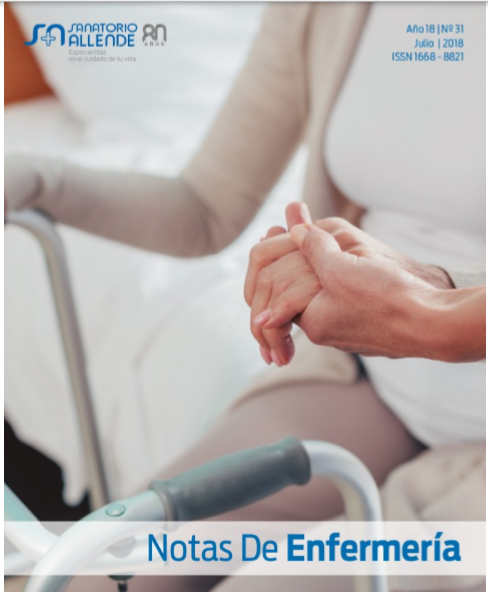Newborns with Congenital Syphilis and their mothers Attended in the Neonatology Service of the ELOÍSA TORRENT VIDAL Hospital in Corrientes. Years 2015-2016
DOI:
https://doi.org/10.59843/2618-3692.v18.n31.21659Keywords:
Syphilis, congenital syphilis, newborns, mothersAbstract
SUMMARY: Congenital syphilis occurs when the mother with syphilis transmits the infection to the fetus during gestation by hematogenous route or during delivery by direct contact of the neonate with maternal genital lesions. It is an increasing social problem, which is why it was necessary to contextualize it in our environment. Objective: To determine the characteristics of newborns with congenital syphilis, assisted in the neonatology service of the Eloísa Torrent de Vidal Hospital in the city of Corrientes from January 1, 2015 to December 31, 2016. Material and method: Descriptive study , retrospective, cross-sectional, data source clinical histories, variables analyzed were gestational age, birth weight, need for hospitalization, time of hospitalization, epidemiological criteria for the diagnosis of syphilis, the mother's age, treatment of syphilis in the mothers and origin of the mother. Results: 65 neonates with congenital syphilis attended between 2015 and 2016 were detected. Of these, 24 were male and 41 female, in relation to gestational age, the minimum was 20 weeks, the maximum 40 weeks, the most frequent 37 weeks (22 %); 43 newborns presented adequate weight for gestational age. The most frequent period of hospitalization was 10 days. Regarding the epidemiological criteria for the diagnosis of syphilis, 28 cases were confirmed. With regard to maternal age, a range of ages between 16 and 40 years was presented, categorized in adolescents from 16 to 19 years old, 41%, young people from 20 to 34 years old, 54% and old people from 35 to 40 years old, 5%. When considering the origin of mothers with syphilis 77% resided in capital and 23% came from the provincial interior. In reference to the maternal treatment of syphilis, 2 cases were observed that completed the treatment, 36 with incomplete treatment and no treatment 27. The cases with confirmed diagnosis were 28, with weights between 900 and 4200 grams, with gestational age between 26 and 40 weeks, 20 mothers without treatment and 8 with incomplete treatment, 22 with domicile in the capital and 6 of the provincial interior. Conclusions: 65 cases were detected that received treatment for congenital syphilis, 28 of them had confirmation of the diagnosis, with gestational age between 26 and 40 weeks. In the origin of the mothers 77% resided in capital and 23% in the interior; 63 mothers had not received treatment or did not complete it during the prenatal period, observing a lack of attendance at the follow-up controls of the pregnancy, being the most remarkable and worrisome in our conclusions.
Downloads
References
1. Parra L. Wilka, N. (eds). Sífilis congénita en el servicio de neonatología del hospital Dr. Ramón Madariaga. Revista de posgrado de la VIa cátedra de medicina. 2007 Enero;(165). Pág. 6-11.
2. OMS. Eliminación mundial de la sífilis congénita, Fundamentos y estrategias para la acción. In “Reunión consultiva técnica sobre la eliminación de la sífilis congénita; 2008; Ginebra. p. VII. Pág. 3-14.
3. Falistocco, C. Sífilis Congénita. Una deuda pendiente. Curso de Infecciones de Prevalencia Social. TBC, Sífilis, VIH-Sida. In 5to. Congreso de Pediatría Ambulatoria; 2010. Pág. 1-31.
4. Mazin, R. Sífilis materna y sífilis congénita en América Latina Revista Panamericana de Salud Pública. 2004; 16(3). Pág. 211-217.
5. Miguel, F. Centro Nacional de Investigaciones Científicas técnicas (Conicet). [Online]. 2017 [cited 2017 junio 27. Available from: http://www.conicet.gov.ar/la-sifilis-en-la-actualidad/.
6. Max, J. Sotillo – Soler, V. Estrategia Educativa Sobre Infecciones de Transmisión Sexual en los/las Adolescentes. Ucuenca. 2015 Abril. Pág. 20-75.
7. Braselli A. Infecto. [Online]. [cited 2017 julio 2. Available from: http://www.infecto.edu.uy/indicetema.html.
8. Hernández Girón, C. Cruz Valdez, A. (eds). Prevalencia y Factores de Riesgo Asociados a Sífilis en Mujeres. Scielo. 1998; 32(6). Pág. 579-586.
9. Forero Laguado, N. Peña García, M. Enfoque Global de la Sífilis Congénita. Medicas Uis. 2011 Agosto; 24(2). Pág. 201- 215.
10. Albarzúa, F. Belmar, C. (eds). Pesquisa de Sífilis Congénita al Momento del Parto: ¿Suero Materno o Sangre de Cordón? Scielo. 2008 junio; 25(3). Pág 155-161.
11. Ortega, X. Pinto, M. (eds). Caso Clínico-Radiológico: Sífilis Congénita. Revista Médica Clínica Las Condes. 2011 Marzo; 22(2). Pág 243-247.
12. Salazar, J. Perret, P. (eds). Evaluación de Métodos de Diagnósticos para Sífilis Congénita. Revista Chilena de Infectología. Scielo. 2000; 7 (4).
Downloads
Published
Issue
Section
License
Copyright (c) 2018 Sanatorio Allende

This work is licensed under a Creative Commons Attribution-NonCommercial 4.0 International License.
Those authors who have published with this journal, accept the following terms:
- Attribution — You must give appropriate credit, provide a link to the license, and indicate if changes were made. You may do so in any reasonable manner, but not in any way that suggests the licensor endorses you or your use.
- NonCommercial — You may not use the material for commercial purposes.

